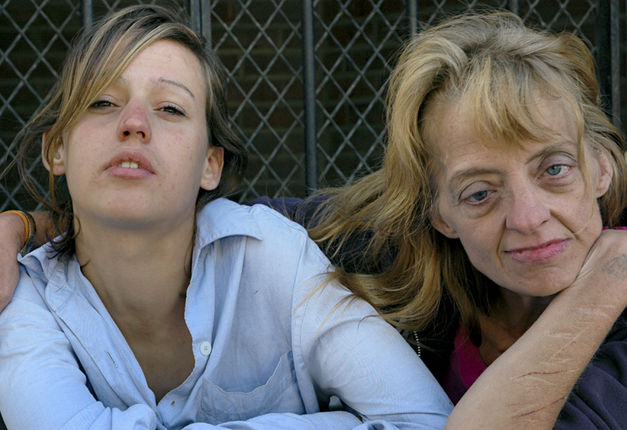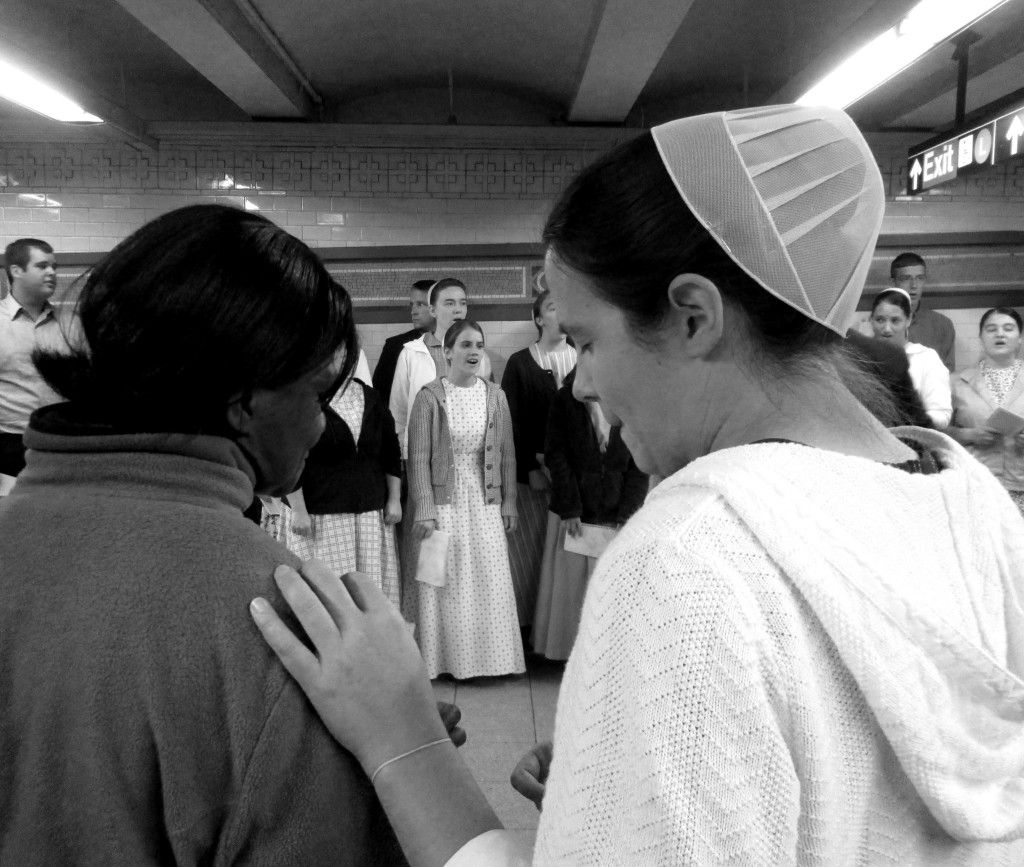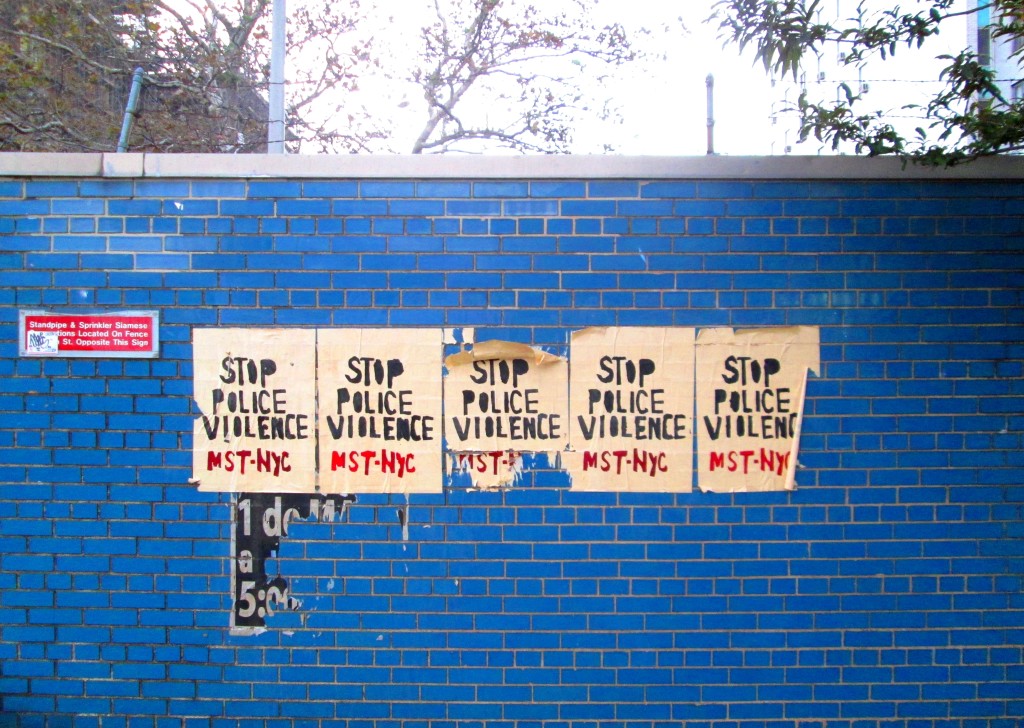Terrence Malick on ‘Days of Heaven’ (1979)
“Harvest workers were not people of the soil, but urban dwellers who had abandoned their cities, their factories. Rather than criminals, it would be fairer to say they lived on the margins of crime, fed by elusive hopes. At the time of the film, those who worked the seasons hated their jobs and the farmers did not trust them. They could not touch the machinery: if something was breaking, they had to signal by raising their hat on a stick. To distinguish themselves, they were always putting on their best clothes. I had noticed that myself when I was a teenager. To the farmers they were bringing – and this is still true – a piece of their homeland and of new horizons. And farmers sat down to listen – charmed – to hear the story of these workers. Already the farmers were almost nothing more than businessmen and they felt nostalgia for those days of yesteryear where they were themselves caretakers of their earthly riches. Workers and farmers were embodying people whose hopes were being destroyed, some more than others, by opulence or poverty. All were full of desires, dreams and appetites, which I hope permeates the film. For these people, happiness comes and goes, they [represent] fleeting moments. Why? They don’t know, just as they don’t know how to achieve happiness. If they see before them another season, another harvest, they feel unable to build a life. Though this is familiar to a European, it may seem puzzling for Americans. Americans feel entitled to happiness, and once they manage to find it, they feel as if they own it. If they are deprived of it, they feel cheated. If they feel it has been taken away from them, they imagine they have been done wrong. This guilt I have felt from everyone I’ve known. It’s a bit like a Dylan song: they have held the world in their hands and let it slip through their fingers. As for the title [of the movie], it’s a feeling that a place exists that’s within reach and where we’ll be safe. It’s a place where a house will not rest on the sand, where you won’t become crazier by fighting again and again against the impossible.”
Film Capsule: All Is Lost
All Is Lost does the same thing for being lost at sea that Gravity does for being lost in space, with one major distinction – Gravity is an overwhelming achievement in directing, while All Is Lost is a overwhelming achievement in acting. This is not to disparage Sandra Bullock anymore than it is J.C. Chandor. It is simply to express that most of the superlatives reserved for Alfonso Cuaron’s role in Gravity are the same ones critics are using to describe Robert Redford’s performance throughout Lost.
In either case, the praise is well-deserved. For the purpose of this review, it bears mentioning that Robert Redford pulled this – the most taxing role of his entire career – off at the venerable age of 77. We’re talking Lifetime Achievement territory here, the point at which most A-Listers are happy to be working. But. man, oh, man, if Robert Redford doesn’t bring the noise. He’s acting, he’s directing, he’s doing both at a phenomenal clip. Meanwhile, he’s an outspoken critic, and pundit, and activist, as well as the lone oracle of Sundance. Robert Redford is the fighter of good fights, People‘s Sexiest Man Alive decades before People even had a Sexiest Man Alive. He’s at the center of everything that’s great about Old Hollywood, and he is the epitome of presence in J.C. Chandor’s gripping drama.
With only 12 minor tidbits of dialogue, and no one else to balance out the curve, Redford conveys every emotion nonverbally. Yet he does it all so subtly, it almost feels like being hypnotized. When Redford’s frustrated, you feel frustrated; when he’s trapped, you feel trapped; when he’s been out there on the ocean for eight days, you start to feel a twinge of nausea.
And then there is the palette.
Everything about All Is Lost is red, white and blue. The boat is red, white and blue. The maps are red, white and blue. Robert Redford is red, white and blue. Chandor is toiling in grand metaphors here, only he’s doing so with such panache he almost cannibalizes his own movie. I mean, who among us would really opt to be lost at sea – or in space, for that matter – for the better part of two hours? No one, really, if not for a belief that their journey might provide some reward. It’s the very reason people play video games or ride coasters – the rush without the risk.
They have yet to dream up the honor Robert Redford should be feted with, not only for his acting, but 50 years worth of humility. This despite a wealth and industry that encourage just the opposite. Oddly enough, a lot of the behaviors Redford rails against in real-life are buried deep beneath Chandor’s screenplay. Namely, how many times can one escape the oncoming storm, and what happens when one’s options are exhausted?
(All is Lost opens in New York and Los Angeles today, with a wide release scheduled for next Friday, October 25th.)
Galleria: ‘Ten Years’ by Zoe Strauss @ The International Center of Photography
 It’s a funny thing about street portraiture in that the artist’s work almost always represents the way the artist views himself. Brandon Stanton (AKA Humans of New York)? Well, now, right there you’ve got a working Joe with oodles of good will to spare. Scott Schuman (AKA The Sartorialist)? Well, now, there you’ve got a dapper Dan who fancies himself debonair. The point being, split-second portraiture is a proposition largely based on human trust. If the subject sees herself in the photographer, she’s much more likely to accept him at his word.
It’s a funny thing about street portraiture in that the artist’s work almost always represents the way the artist views himself. Brandon Stanton (AKA Humans of New York)? Well, now, right there you’ve got a working Joe with oodles of good will to spare. Scott Schuman (AKA The Sartorialist)? Well, now, there you’ve got a dapper Dan who fancies himself debonair. The point being, split-second portraiture is a proposition largely based on human trust. If the subject sees herself in the photographer, she’s much more likely to accept him at his word.
Enter Zoe Strauss, a self-taught phenom who extracts great beauty from stark pain. Strauss’s work, while not exclusively steeped in portraiture, tells the story of a broken city (Philadelphia), and the struggling, marginalized characters who Strauss encounters on its streets. Strauss’s 10 Years exhibit, which IFB originally profiled prior to its run at the Philadelphia Museum of Art, is given a much wider berth to breathe at ICP. The installation takes up an entire floor, with individual panels set aside for every photograph. The work is significant, at certain moments even jarring. Yet, to turn away would only be to reinforce the point. And the point is not to turn away.
(10 Years will be on view at the International Center of Photography until January 19, 2014. 1133 Avenue of the Americas @ 43rd Street.)
Five More For The Offing:
- ROD PENNER @ Ameringer/McEnery/Yohe (Free, 10/17-11/23, 525 West 22nd Street)
- Still Light by Marc Chalme @ Axelle Galerie (Free, through 10/27, 472 West Broadway)
- New York Over the Top by Max Kozloff @ Steven Kasher Gallery (Free, through 10/19, 521 West 23rd Street)
- Homeland by James Winn @ Fischbach Gallery (Free, through 11/9, 210 11th Avenue, Suite 801)
- Better Out Than In by Banksy (Including work at a new location every day throughout October)
Tina Fey on Gender Bias in The Workplace (2011)
“My unsolicited advice to women in the workplace is this. When faced with sexism, or ageism, or lookism, or even really aggressive Buddhism, ask yourself the following question: ‘Is this person in between me and what I want to do?’ If the answer is no, ignore it and move on. Your energy is better used doing your work and outpacing people that way. Then, when you’re in charge, don’t hire the people who were jerky to you.”
Happy Columbus Day!
Upon the 35th Anniversary of John Carpenter’s ‘Halloween’
A full minute before the curtain lifts, John Carpenter’s already got you with that music … that 5/4 building octave wreaking havoc over credits. Halloween‘s opening salvo unfolds exactly like Spielberg’s Jaws – looping music over credits, cut to teenagers, slight flirtation, an invitation, followed by the insinuation of some unknown evil, creeping, slowly, eerily, unseen … driven on by pairing beats, the camera zooming in upon some naked woman’s body … building, building, ever-closer, straight on up until the bloodbath hits.
There are a host of other similarities, sure, but the majority of them tend to lean toward the age-old art of storytelling – a small town, familiar characters, some lonesome hero railing mad against bureaucracy. We’ve seen this entertainment through and through. But we’ve rarely seen it done with such panache as Halloween, a point which goes to show that less is more in terms of Horror. Less killing, fewer blood packs, stronger story.
Consider what John Carpenter was working with – a $300,000 budget that only allowed for three weeks worth of shooting, one willing B-list movie star, and the casting of some virtual unknown to play the female lead. The arch-villain would be portrayed by an old college buddy at a cost of $25 per day.
That’s a grad school film project, not a major motion picture. Continue reading
Daniel Kitson on Wide-Screen Metaphors (2006)
“There was this boy. And he was a tiny boy – a very, very little boy. He was so small that his mom had to buy him a wooly hat that he would one day grow into. And it sits on top of his head stiff and upright and entirely empty of head. And it’s a cold day – a very cold day – so he’s got his coat on, he’s got his wooly hat on, and he’s got his mittens on. With his left mitten, quite tightly, he’s holding onto his mom. And with his right mitten, even more tightly, he’s holding onto a balloon. And he’s holding the balloon in that way that only children really hold balloons, in that way that says, ‘I’ve got it. I’ve got the balloon. I’ve been stung by balloons in the past, you know. They’ve blown away, they’ve floated up into the sky. They’ve even been known to burst on occasion. Not this one, though. This one’s different. This one’s a keeper. I’m gonna take this one home and I’m gonna put it in my bedroom. And then I’m gonna watch it slowly die.’ That whole story could be seen as a metaphor for life, where the boy represents all people and the balloon
represents any sort of happiness or love.”
A Chronological List of 27 Notes I Made During a Recent Screening of Alfonso Cuaron’s ‘Gravity’
- The silence feels so welcoming
- Brilliant camerawork
- Early dialogue plays like it was written for a video game
- First 15 minutes, one continuous take
- First 15 minutes, all tell
- Amazing how they accomplish this without inducing motion-sickness
- Bullock: “Well, you know what.” (non sequitur)
- Only one major cut during initial 25 minutes
- Clooney = soothing
- The sense of security that comes along with being attached to somebody
- “Swingin’ On a Star“
- Lake Zurich = What a wonderful place to raise a family
- Set adrift inside the womb
- Major Tom/”Space Oddity”
- What motivates someone to make a critically-acclaimed space movie?
- Holy Toledo!
- Please don’t let this movie have a happy ending
- Inscrutable attention to detail
- “Nothing can hurt you up here.”
- Final 15 minutes, all show
- “Rocketman”
- How’d-he-do-dat?
- Quite a feat
- Circle of Life
- That final sequence was astonishing
- 2001
- Totally forgot about my M&Ms
(Gravity arrives in theaters nationwide today.)
Film Capsule: The Summit
The experienced climber is well above 8,000 meters when the initial wave of atrophy occurs. The early symptoms are quite subtle – narrow breathing, cramping limbs, perhaps the sudden, stilted loss of equilibrium. One is well within the summit push come this point, trapped inside what seasoned vets might call the Death Zone. Pressing onward causes lungs to swell, the air now thin and weakened to a point where one is breathing through fixed tubes. Meanwhile, the frost is seeping in through numb extremities and stiff toes have given way to midnight blue. Looking up, the line of sight becomes obstructed, blurred by frozen goggles and snow-blindness. And yet, one presses on, beyond the serac and the snowdrifts, beyond the avalanche and ice, beyond the setbacks and the casualties, beyond it all until one stands upon the summit.
And that, my friends, is when the real mortal danger almost immediately sets in.
For it is upon the steep descent that 75% of all fatalities occur. It is upon the steep descent that one in four climbers go dying. And it was upon the steep descent that the lion’s share of 11 professional mountaineers met their death during a weekend climb during the summer of 2008. Twenty-two climbers started up. Only 11 came back down.
The Summit provides a fairly breathtaking – if not slightly disjointed – job of chronicling the events that led up to and through that landmark expedition. I suggest that you go see it in a darkened theater, with no distractions and no cell phones. Otherwise, you won’t actually be seeing it at all.
(The Summit opens this Friday at the Landmark Sunshine Cinema and Lincoln Plaza in New York City.)


